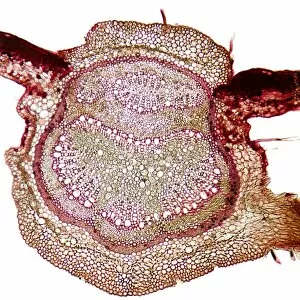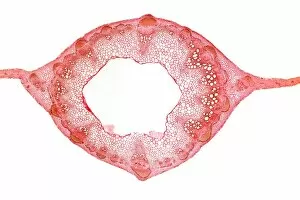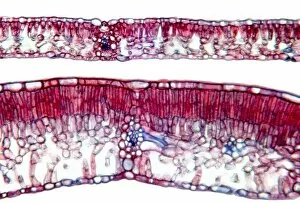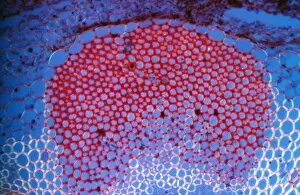Sclerenchyma Collection
Sclerenchyma, a type of plant tissue, is known for its strength and support
All Professionally Made to Order for Quick Shipping
Sclerenchyma, a type of plant tissue, is known for its strength and support. Its structure can be compared to that of balsa wood when observed under a scanning electron microscope (SEM). The SEM reveals intricate patterns resembling the lightweight yet sturdy composition of balsa wood. In addition to its resemblance to balsa wood they can also be found in various other plant structures. For instance, in maize stems, light micrographs show the presence cells providing rigidity and structural integrity. These cells are arranged in bundles or strands throughout the stem, reinforcing it against bending or breaking. Another example is seen in Ammophila arenaria leaves. Multiple light micrographs capture the intricate network cells within these leaves. This arrangement helps maintain their shape even under harsh conditions such as strong winds or shifting sand dunes where Ammophila arenaria thrives. The repetitive appearance of Ammophila arenaria leaf micrographs emphasizes how vital sclerenchyma is for this particular species' survival. It highlights nature's ingenious design by incorporating this tissue into their leaves repeatedly to withstand environmental challenges. Maize stems also exhibit similar adaptations with multiple light micrograph images showcasing the presence cells throughout their structure. These cells provide mechanical support and contribute to overall stem strength necessary for upright growth and resistance against external forces. Furthermore, clubmoss stems display a comparable pattern when examined using light microscopy techniques. Sclerenchyma plays an essential role here too by enhancing stability and preventing collapse during growth stages. Overall, these visual representations emphasize the importance and versatility tissue across different plants' anatomies. Whether it resembles balsa wood under SEM or appears as interconnected networks within maize stems, Ammophila arenaria leaves, or clubmoss stems through light microscopy - one thing remains clear.




















